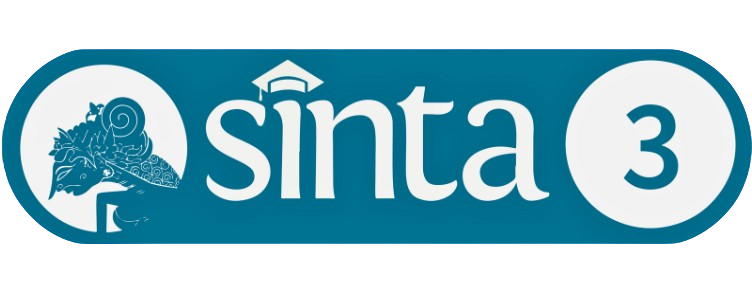Hubungan Health Anxiety dan Cyberchondria: Sebuah Tinjauan Literatur Naratif
Unduhan
Cyberchondria didefinisikan sebagai pencarian berlebihan atau berulang untuk informasi terkait kesehatan di internet yang mengakibatkan tekanan dan/atau kecemasan. Namun, dalam perkembangannya, masih belum jelas apakah health anxiety merupakan pemicu pencarian informasi kesehatan di internet yang berlebihan dan/atau health anxiety muncul setelah melakukan pencarian informasi kesehatan di internet yang berlebihan tersebut. Metode penelitian yang digunakan adalah tinjauan literatur naratif dengan tujuan untuk merangkum dan menganalisis penelitian terkait health anxiety dan cyberchondria. Hasil tinjauan literatur ini menemukan bahwa terdapat hubungan sedang hingga tinggi antara health anxiety dan cyberchondria. Namun, hubungan timbal balik ini tidak dapat ditemukan dalam subsampel individu yang cemas secara klinis. Artinya, cyberchondria dapat dijelaskan sebagai fenomena yang mungkin muncul pada individu dengan tingkat kecemasan kesehatan non-klinis, daripada karakteristik individu yang cemas kesehatan secara klinis. Oleh karena itu, diperlukan penelitian empiris lebih lanjut untuk mengeksplorasi hubungan dan pengaruh health anxiety terhadap cyberchondria dalam sampel yang lebih spesifik.
(2021). Unveiling the relationships between cyberchondria and psychopathological symptoms. Journal of Psychiatric Research, 143(September), 254–261. https://doi.org/10.1016/j.jpsychires.2021.09.014
Asmundson, G. J. G., Abramowitz, J. S., Richter, A. A., & Whedon, M. (2010). Health anxiety: Current perspectives and future directions. Current Psychiatry Reports, 12(4), 306–312. https://doi.org/10.1007/s11920-010-0123-9
Asmundson, G. J. G., & Taylor, S. (2020). How health anxiety influences responses to viral outbreaks like COVID-19: What all decision-makers, health authorities, and health care professionals need to know. Journal of Anxiety Disorders, 71(March), 102211. https://doi.org/10.1016/j.janxdis.2020.102211
Asosiasi Penyelenggara Jasa Internet Indonesia. (2022). Profil Internet Indonesia 2022.
Bajcar, B., & Babiak, J. (2021). Self-esteem and cyberchondria: The mediation effects of health anxiety and obsessive–compulsive symptoms in a community sample. Current Psychology, 40(6), 2820–2831. https://doi.org/10.1007/s12144-019-00216-x
Barsky, A. J., & Kierman, G. L. (1983). Overview: Hypochondriasis, bodily complaints, and somatic styles. American Journal of Psychiatry, 140(3), 273–283.
Bati, A. H., Mandiracioglu, A., Govsa, F., & Çam, O. (2018). Health anxiety and cyberchondria among Ege University health science students. Nurse Education Today, 71(March), 169–173. https://doi.org/10.1016/j.nedt.2018.09.029
Baumgartner, S. E., & Hartmann, T. (2011). The role of health anxiety in online health information search. Cyberpsychology, Behavior, and Social Networking, 14(10), 613–618. https://doi.org/10.1089/cyber.2010.0425
BÅ‚achnio, A., Przepiórka, A., Kot, P., Cudo, A., & Steuden, S. (2022). The role of emotional functioning in the relationship between health anxiety and cyberchondria. Current Psychology, 2019. https://doi.org/10.1007/s12144-022-04126-3
Doherty-Torstrick, E. R., Walton, K. E., & Fallon, B. A. (2016). Cyberchondria: Parsing Health Anxiety From Online Behavior. Psychosomatics, 57(4), 390–400. https://doi.org/10.1016/j.psym.2016.02.002.Cyberchondria
Fergus, T. A. (2013). Cyberchondria and intolerance of uncertainty: Examining when individuals experience health anxiety in response to internet searches for medical information. Cyberpsychology, Behavior, and Social Networking, 16(10), 735–739. https://doi.org/10.1089/cyber.2012.0671
Fergus, T. A. (2014). The Cyberchondria Severity Scale (CSS): An examination of structure and relations with health anxiety in a community sample. Journal of Anxiety Disorders, 28(6), 504–510. https://doi.org/10.1016/j.janxdis.2014.05.006
Fergus, T. A., & Dolan, S. L. (2014). Problematic internet use and internet searches for medical information: The role of health anxiety. Cyberpsychology, Behavior, and Social Networking, 17(12), 761–765. https://doi.org/10.1089/cyber.2014.0169
Fergus, T. A., & Russell, L. H. (2016). Does cyberchondria overlap with health anxiety and obsessive-compulsive symptoms? An examination of latent structure and scale interrelations. Journal of Anxiety Disorders, 38, 88–94. https://doi.org/10.1016/j.janxdis.2016.01.009
Fox, S., & Duggan, M. (2013). Health Online 2013.
Frost, J., Vermeulen, I. E., & Beekers, N. (2014). Anonymity versus privacy: Selective information sharing in online cancer communities. Journal of Medical Internet Research, 16(5), 1–11. https://doi.org/10.2196/jmir.2684
Gropalis, M., Bleichhardt, G., Hiller, W., & Witthöft, M. (2013). Specificity and modifiability of cognitive biases in hypochondriasis. Journal of consulting and clinical psychology, 81(3), 558–565. https://doi.org/10.1037/a0028493
Jabson, J. M., Patterson, J. G., & Kamen, C. (2017). Understanding health information seeking on the internet among sexual minority people: Cross-sectional analysis from the health information national trends survey. JMIR Public Health and Surveillance, 3(2), 1–9. https://doi.org/10.2196/publichealth.7526
Kristina, S. A., Ekasari, M. P., & Wati, M. R. (2019). Internet use for searching information on health and medicine: An exploratory study among Indonesian customers. Research Journal of Pharmacy and Technology, 12(12), 5927–5931. https://doi.org/10.5958/0974-360X.2019.01028.X
Lecci, L., & Cohen, D. J. (2002). Perceptual consequences of an illness-concern induction and its relation to hypochondriacal tendencies. Health Psychology, 21(2), 147–156. https://doi.org/10.1037/0278-6133.21.2.147
Looper, K. J., & Kirmayer, L. J. (2001). Hypochondriacal concerns in a community population. Psychological Medicine, 31(4), 577–584. https://doi.org/10.1017/S0033291701003737
Mathes, B. M., Norr, A. M., Allan, N. P., Albanese, B. J., & Schmidt, N. B. (2018). Cyberchondria: Overlap with health anxiety and unique relations with impairment, quality of life, and service utilization. Psychiatry Research, 261, 204–211. https://doi.org/10.1016/j.psychres.2018.01.002
McElroy, E., & Shevlin, M. (2013). The development and initial validation of the cyberchondria severity scale (CSS). Journal of Anxiety Disorders, 28(2), 259–265. https://doi.org/10.1016/j.janxdis.2013.12.007
Monney, G., Penzenstadler, L., Dupraz, O., Etter, J. F., & Khazaal, Y. (2015). mHealth app for cannabis users: Satisfaction and perceived usefulness. Frontiers in Psychiatry, 6(AUG), 32–35. https://doi.org/10.3389/fpsyt.2015.00120
Muse, K., McManus, F., Leung, C., Meghreblian, B., & Williams, J. M. G. (2012). Cyberchondriasis: Fact or fiction? A preliminary examination of the relationship between health anxiety and searching for health information on the Internet. Journal of Anxiety Disorders, 26(1), 189–196. https://doi.org/10.1016/j.janxdis.2011.11.005
Pawar, P., Kamat, A., Salimath, G., Jacob, K. R., & Kamath, R. (2022). Prevalence of Cyberchondria among Outpatients with Metabolic Syndrome in a Tertiary Care Hospital in Southern India. Scientific World Journal, 2022. https://doi.org/10.1155/2022/3211501
Santoro, G., Starcevic, V., Scalone, A., Cavallo, J., Musetti, A., & Schimmenti, A. (2022). The Doctor Is In(ternet): The Mediating Role of Health Anxiety in the Relationship between Somatic Symptoms and Cyberchondria. Journal of Personalized Medicine, 12(9). https://doi.org/10.3390/jpm12091490
Selvi, Y., Turan, S. G., Sayin, A. A., Boysan, M., & Kandeger, A. (2018). The cyberchondria severity scale (CSS): Validity and reliability study of the Turkish version. Sleep and Hypnosis, 20(4), 241–246. https://doi.org/10.5350/Sleep.Hypn.2018.20.0157
Simanjuntak, E. J., & Princen, P. (2022). Pengaruh Kecemasan Kesehatan dengan Cyberchondria di tengah Pandemi Covid-19. Manasa, 11(1), 34–47. https://doi.org/10.25170/manasa.v11i1.3325
Singh, K., & Brown, R. J. (2014). Health-related Internet habits and health anxiety in university students. Anxiety, Stress and Coping, 27(5), 542–554. https://doi.org/10.1080/10615806.2014.888061
Starcevic, V. (2017). Cyberchondria: Challenges of Problematic Online Searches for Health-Related Information. Psychotherapy and Psychosomatics, 86(3), 129–133. https://doi.org/10.1159/000465525
Starcevic, V., Baggio, S., Berle, D., Khazaal, Y., & Viswasam, K. (2019). Cyberchondria and its Relationships with Related Constructs: A Network Analysis. Psychiatric Quarterly, 90(3), 491–505. https://doi.org/10.1007/s11126-019-09640-5
Starcevic, V., & Berle, D. (2013). Cyberchondria: Towards a better understanding of excessive health-related Internet use. Expert Review of Neurotherapeutics, 13(2), 205–213. https://doi.org/10.1586/ern.12.162
Starcevic, V., & Berle, D. (2015). Cyberchondria: An Old Phenomenon in a New Guise? Dalam E. Aboujaoude & V. Starcevic (Ed.), Mental Health in the Digital Age: Grave Dangers, Great Promise (hlm. 0). Oxford University Press. https://doi.org/10.1093/med/9780199380183.003.0006
Taylor, S., & Asmundson, G. (2004). Treating health anxiety: A cognitive-behavioral approach. The Guilford Press.
te Poel, F., Baumgartner, S. E., Hartmann, T., & Tanis, M. (2016). The curious case of cyberchondria: A longitudinal study on the reciprocal relationship between health anxiety and online health information seeking. Journal of Anxiety Disorders, 43, 32–40. https://doi.org/10.1016/j.janxdis.2016.07.009
Tonsaker, T., Bartlett, G., & Trpkov, C. (2014). Health information on the Internet Gold mine or minefield? Tag the good and bad. Can Fam Physician, 60, 407–408.
Vismara, M., Caricasole, V., Starcevic, V., Cinosi, E., Dell'Osso, B., Martinotti, G., & Fineberg, N. A. (2020). Is cyberchondria a new transdiagnostic digital compulsive syndrome? A systematic review of the evidence. Comprehensive Psychiatry, 99(Comprehensive Psychiatry journal), 1–13. https://doi.org/10.1016/j.comppsych.2020.152167
Zheng, H., & Tandoc, E. C. (2022). Calling Dr. Internet: Analyzing News Coverage of Cyberchondria. Journalism Practice, 16(5), 1001–1017. https://doi.org/10.1080/17512786.2020.1824586
Hak Cipta (c) 2024 Putu Angita Gayatri, Atika Dian Ariana

Artikel ini berlisensi Creative Commons Attribution 4.0 International License.
BRPKM adalah terbitan berkala dengan akses terbuka Creative Commons Attribution 4.0 International (CC-BY 4.0) sehingga hak cipta tetap berada di tangan penulis.
Dengan lisensi ini, siapapun berhak menggunakan informasi dan melakukan re-distribusi konten yang dimuat dalam jurnal ini untuk kepentingan apapun, termasuk kepentingan komersial. Hal tersebut dapat dilakukan selama memenuhi dua kondisi, yaitu; (1) anda harus memberikan atribusi dengan mengutip sumber tautan aslinya, dan menyatakan apabila ada perubahan yang dilakukan; dan (2) anda tidak dapat menggunakan ketentuan hukum atau sarana kontrol teknologi yang secara hukum dapat membatasi orang lain untuk melakukan hal-hal yang diizinkan oleh lisensi ini.
Redaksi jurnal tidak akan meminta penulis untuk melakukan persetujuan transfer hak cipta atas semua naskah yang diterbitkan.










